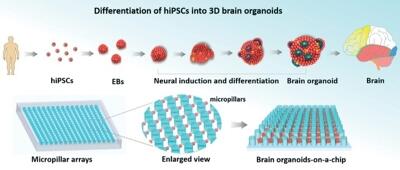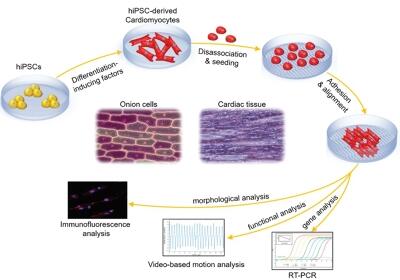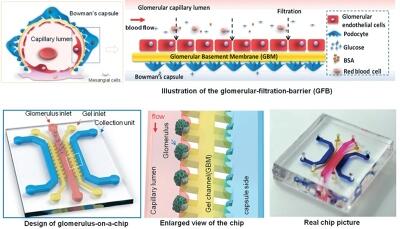In situ generation of human brain organoids on a micropillar array |
We propose a simple strategy to enable in situ formation of massive brain organoids from hiPSCs on a micropillar array without tedious manual procedures. The optimized micropillar configurations allow for controlled EB formation, neural induction and differentiation, and generation of functional human brain organoids in 3D culture on a single device. |

|
|
Lab on a Chip, 2017, 17, 2941 - 2950 |
Bioinspired onion epithelium-like structure promotes the maturation of cardiomyocytes derived from human pluripotent stem cells |
We present a new and simple strategy to fabricate a biomimetic microchip designed with an onion epithelium-like structure and investigate the guided behavior of human induced pluripotent stem cell derived cardiomyocytes (hiPSC-CMs) on the substrate. The hiPSC-CMs were observed to be confined by the three dimensional surficial features morphologically, analogous to the in vivo microenvironment, and exhibited an organized anisotropic alignment on the onion epithelium-like structure with good beatingfunction. |

|
|
Biomaterials Science, 2017, 5, 1810 - 1819 |
A disease model of diabetic nephropathy in a glomerulus-on-a- chip microdevice |
We provide the proof-of-principle for using a glomerulus-on-a- chip microdevice that reconstitutes organ-level kidney functions to create a human disease model of early stage diabetic nephropathy on chip. The microfluidic device, which recapitulates the glomerular microenvironment, consists of parallel channels lined by isolated primary glomerular microtissues that experience fluid flow to mimic the glomerular filtration barrier (GFB), including glomerular endothelial cells, 3D basement membrane and podocytes. |

|
|
Lab on a Chip, 2017, 17, 1749-1760 (hot paper) |

 Research Interests
>
正文
Research Interests
>
正文